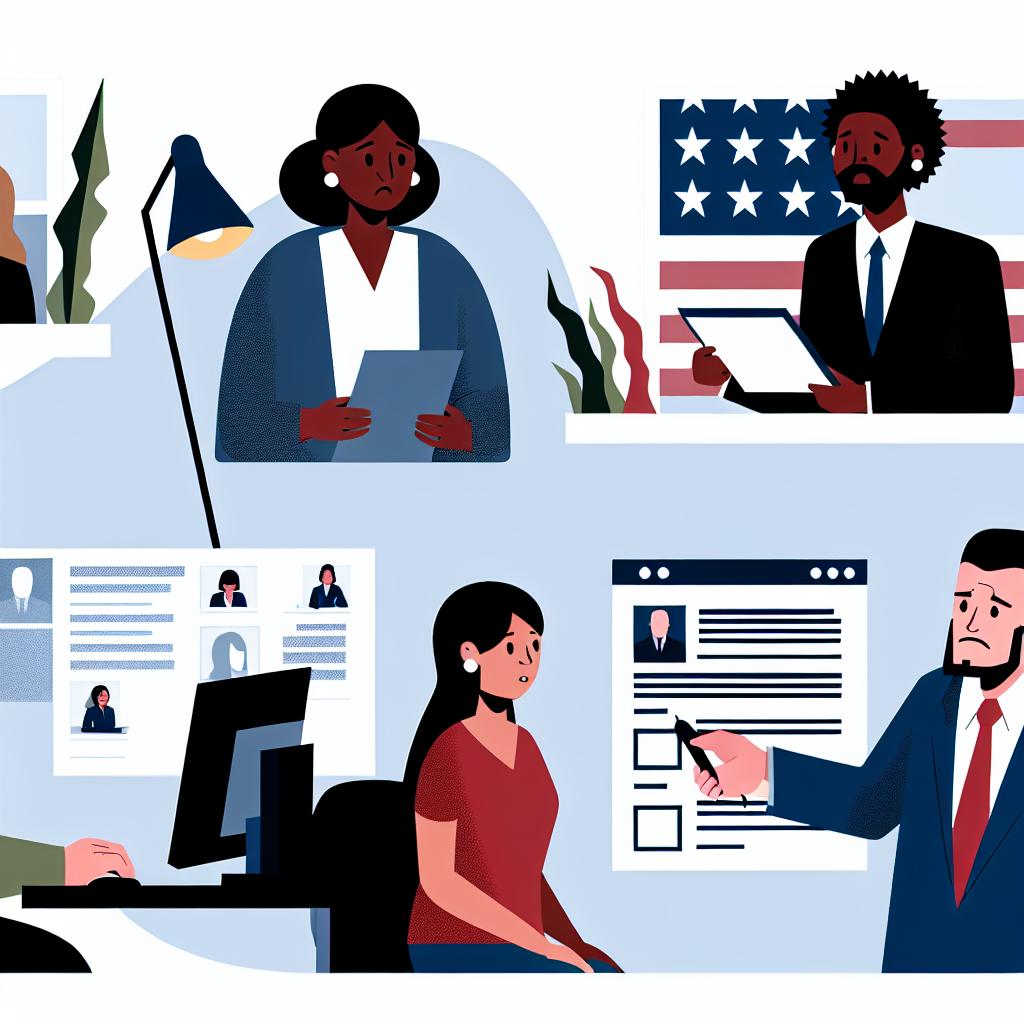
How to Legally Hire Employees in the U.S.
Understanding Legal Requirements for Hiring Employees in the U.S.
When embarking on the process of hiring employees in the United States, it is imperative for employers to adhere to specific legal requirements. This ensures compliance with federal and state laws and protects the employer from potential legal ramifications. The following guide provides a comprehensive overview of the critical steps and considerations necessary for legally hiring employees in the United States.
Obtaining an Employer Identification Number (EIN)
A crucial preliminary step before hiring employees is to obtain an Employer Identification Number (EIN) from the Internal Revenue Service (IRS). The EIN serves as a unique identifier akin to a Social Security number but is used for businesses. It is essential for employers as it is required for filing taxes, reporting employee wages, and complying with federal tax laws. Employers can apply for an EIN easily through the IRS website or by mail. The EIN not only facilitates the handling of payroll taxes but also helps in setting up business bank accounts and credit profiles.
Registering with the State Labor Department
Each state has its own labor department with distinct requirements, and employers typically need to register with the respective department. This registration is vital for managing state-specific requirements such as unemployment insurance and workers’ compensation. Employers must familiarize themselves with the state-specific processes and ensure all necessary registrations are completed before employing staff. Different states may have unique tax rates, benefit requirements, and compliance measures, so business owners need to regularly consult their state’s labor agency to stay informed of any changes in regulations.
Verifying Employee Eligibility
The Immigration Reform and Control Act of 1986 mandates that employers verify the work eligibility of all new hires. This is done by completing Form I-9, Employment Eligibility Verification, for each new employee. Form I-9 verifies the identity and employment authorization of individuals hired in the United States. To simplify this process, employers can utilize the E-Verify system—an electronic tool that compares information from an employee’s Form I-9 to data from U.S. government records to confirm employment eligibility. While participation in E-Verify is voluntary for most employers, certain states or federal contractors might require its use.
Understanding Wage and Hour Laws
A comprehensive understanding of wage and hour laws is critical for employers. The Fair Labor Standards Act (FLSA) is the federal law that establishes minimum wage, overtime pay, recordkeeping, and youth employment standards. Employers must ensure compliance with these federal standards, as well as with any additional wage and hour requirements imposed by their state. It is important to note that some states may have higher minimum wage rates than the federal minimum, and where state laws provide greater benefits to employees, employers must comply with the state provisions. Special attention must be given when employing minors, as there are stringent restrictions on the hours they can work and the types of jobs they can perform.
Classifying Employees Correctly
One of the significant challenges for employers is correctly classifying workers as either employees or independent contractors. Misclassification can result in serious legal consequences, including unpaid taxes and penalties. The classification hinges on various factors, such as the level of control the employer has over the work performed and the independence of the worker. Employees typically work at the direction of the employer, while independent contractors operate autonomously and control how their work is executed. The IRS offers comprehensive guidelines on this topic to assist employers, ensuring that workers are accurately classified according to the nature of their employment relationship.
Setting Up a Payroll System
Employers must establish an efficient payroll system to manage employee compensation effectively. This involves calculating wages, withholding the necessary taxes, and issuing timely payments. Employers can opt to utilize payroll software, hire a payroll service provider, or manage payroll manually, depending on the size and needs of their business. Regardless of the method chosen, compliance with federal, state, and local tax laws is imperative. Employers are responsible for withholding the proper amount of federal income tax, Social Security, and Medicare taxes from their employees’ wages and ensuring these amounts are reported and remitted accurately.
Providing Required Employee Benefits
Certain employee benefits are legally required, and employers must understand these obligations in order to remain compliant. For instance, under the Federal Insurance Contributions Act (FICA), employers are required to contribute to Social Security and Medicare on behalf of their employees. In addition, benefits such as unemployment insurance and workers’ compensation may also be mandated by state laws. For employers with 50 or more full-time employees, the Affordable Care Act requires offering health insurance to employees, emphasizing the importance of understanding the specific benefits required for their workforce size and business type.
Maintaining Accurate Employee Records
Accurate record-keeping is another essential legal requirement in the hiring process. Employers must maintain detailed records of employee wages, hours worked, tax withholdings, and benefit contributions. This documentation is crucial for demonstrating compliance with both federal and state laws and serves as an essential resource in the event of disputes or audits. Employees have the right to inspect their own records, and maintaining clear, accurate documentation is both a legal obligation and a best practice for organizational transparency and accountability.
Conclusion
By following these key steps and staying abreast of federal and state regulations, employers can navigate the complex landscape of hiring employees in the United States legally and effectively. Compliance not only helps in avoiding legal issues and penalties but also contributes to creating a fair, safe, and respectful working environment. Employers are encouraged to continually monitor these requirements and seek guidance from legal experts or human resources professionals to ensure ongoing compliance and address any potential issues proactively.


